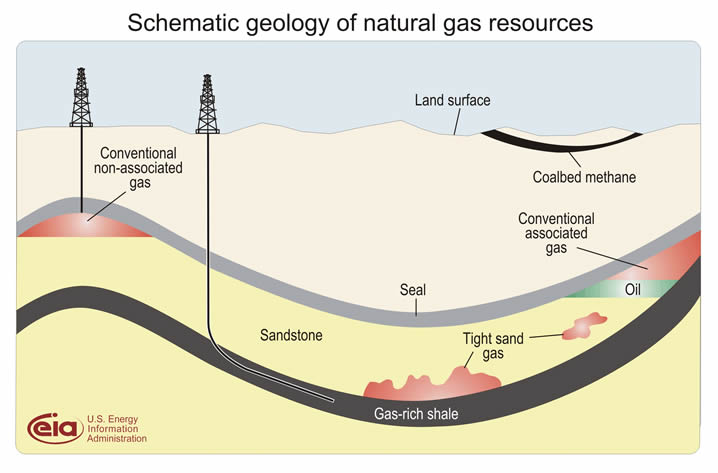Industry
Natural gas provides almost a third of the energy used by U.S. industry. It is used for on-site electricity generation (fueling boilers and turbines); for process heat to melt glass, process food, preheat metals, and dry various products; and for combined heat and power (CHP) systems. Natural gas is also used as a material input itself—as a feedstock—to make products such as fertilizers, chemicals, and plastics in processes that do not emit greenhouse gases.
Replacing lower-efficiency boilers and deploying CHP systems can reduce the emissions intensity of the industrial sector, even as natural gas continues to grow as a proportion of total fuel consumption in the sector. Moreover, new boilers can have a 95 percent efficiency rate, as compared to pre-1985 boilers that average 65 to 70 percent, or those that meet the 2004 standard of 77 to 82 percent. Upgrading these industrial boilers can yield substantial avoided carbon emissions in the sector.
Residential and commercial buildings
Electricity use has been growing more rapidly in buildings due to the proliferation of electronic devices, while natural gas use has remained flat and generally confined to space heating, water heating, cooking, and clothes drying. However, natural gas appliances can often be more efficient on a full-fuel-cycle basis than similar appliances that use electricity, propane, or oil. The source-to-site efficiency of natural gas averages 92 percent; that is, 92 percent of the energy contained in extracted natural gas is useful energy that can directly fuel appliances, as compared to about 30 percent efficiency for electric appliances. However, continued reliance on natural gas appliances will not enable us to achieve our mid-century net zero emission goal. As the electric grid in the U.S. continues to decarbonize, greater use of electric appliances affords a cleaner pathway to decarbonizing buildings.
Natural gas may also increase the overall efficiency of consumer energy when used for electricity generation on site through fuel cells and microturbines. Natural gas-powered fuel cells use natural gas and air to create electricity and usable heat through an electrochemical process rather than combustion, meaning fuel cells are highly efficient compared to other forms of distributed generation and produce relatively low emissions. Fuel cell technology has been around for decades but has not been widely deployed due to concerns about cost and durability. Microturbines are small combustion turbines approximately the size of a refrigerator with individual unit outputs of up to 500 kilowatts (kW). They can be fueled by natural gas, hydrogen, propane, or diesel. Like fuel cells, microturbines can achieve much higher energy efficiencies, because the electricity and waste heat generated can be used on site.
Transportation
Transportation now accounts for the greatest share of U.S. greenhouse gas emissions (about 28 percent of total emissions in 2018), and energy use in the sector is dominated by oil. The majority of natural-gas-fueled vehicles in the United States are buses and trucks running on compressed natural gas (CNG) or liquefied natural gas (LNG). CNG and LNG can reduce greenhouse gas emissions as compared to gasoline and diesel, and they are energy-dense fuels that can be used in heavy-duty engines where electrification may not yet be economically viable. Limited availability of fueling infrastructure is one of the hurdles to deploying more natural gas trucks.
Hydrogen
Hydrogen gas has significant potential to contribute to decarbonization as a versatile zero-emission energy carrier across multiple sectors of the economy. The primary production pathway in the United States today is steam methane reforming (SMR), which creates “gray” hydrogen from natural gas; it also creates carbon dioxide emissions. However, when carbon capture technology is applied to the SMR process, very low-emission or “blue” hydrogen is produced. Globally, less than one percent of SMR production is “blue” hydrogen, but if it were scaled up and largely replaced “gray” hydrogen production, it represents a clean energy pathway that utilizes natural gas and would be consistent with mid-century climate targets.


